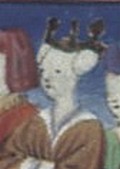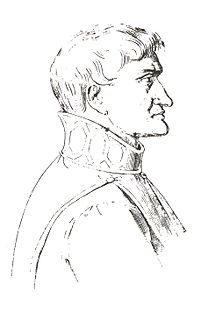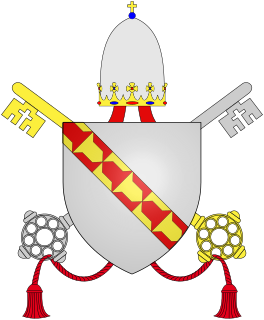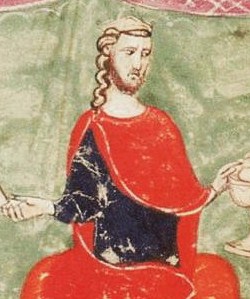 W
WAlfonso III, called the Liberal or the Free, was the King of Aragon, King of Valencia, Count of Roussillon, Count of Sardinia and Count of Barcelona from 1285. He conquered the Kingdom of Majorca between his succession and 1287.
 W
WCharles of Valois, the third son of Philip III of France and Isabella of Aragon, was a member of the House of Capet and founder of the House of Valois, whose rule over France would start in 1328.
 W
WJean Cholet was a French cardinal and Doctor utriusque iure at the University of Paris. His diplomatic skills helped prevent a duel between the kings of France and Aragon. He served as Papal Legate in France, and was responsible for organizing the Aragonese Crusade of 1283–84. He was then a working member of the Roman Curia.
 W
WConstance II of Sicily was Queen consort of Aragon as the wife of Peter III of Aragon and a pretender to the Kingdom of Sicily from 1268 to 1285. She was the only daughter of Manfred of Sicily and his first wife, Beatrice of Savoy.
 W
WDina and Clarenza are two women connected in legend with the historical siege of Messina by Charles I of Anjou during the Sicilian Vespers in August 1282.
 W
WJames II was King of Majorca and Lord of Montpellier from 1276 until his death. He was the second son of James I of Aragon and his wife, Violant, daughter of Andrew II of Hungary. In 1279, by the Treaty of Perpignan, he became a vassal of the Crown of Aragon.
 W
WJohn of Procida (1210–1298) was an Italian medieval physician and diplomat.
 W
WMacalda di Scaletta was a Sicilian baroness, warrior woman, lady-in-waiting, and courtesan during the Angevin and Aragonese periods. Though the daughter of Giovanni di Scaletta and a Sicilian noblewoman, she was of humble origins. Macalda was noted for her unscrupulous political conduct, inclination to betray marriage, and for her easy and promiscuous sexual habits; this dissoluteness, even having a brush with "suspicion of incest," tended to degenerate into an "exhibitionism veined with nymphomania." She was the wife of the Grand Justiciar of the Kingdom of Sicily, Alaimo da Lentini.
 W
WPope Martin IV, born Simon de Brion, was the head of the Catholic Church and ruler of the Papal States from 22 February 1281 to his death. He was the last French pope to have held court in Rome; all subsequent French popes held court in Avignon.
 W
WMichael VIII Palaiologos or Palaeologus reigned as the co-emperor of the Empire of Nicaea from 1259 to 1261, and as Byzantine Emperor from 1261 until his death. Michael VIII was the founder of the Palaiologan dynasty that would rule the Byzantine Empire until the Fall of Constantinople in 1453. He recovered Constantinople from the Latin Empire in 1261 and transformed the Empire of Nicaea into a restored Byzantine Empire.
 W
WPeter III of Aragon was King of Aragon, King of Valencia, and Count of Barcelona from 1276 to his death. At the invitation of some rebels, he conquered the Kingdom of Sicily and became King of Sicily in 1282, pressing the claim of his wife, Constance II of Sicily, uniting the kingdom to the crown.
 W
WPhilip III, called the Bold, was king of France from 1270 until his death in 1285. His father, Louis IX, died in Tunis during the Eighth Crusade. Philip, who was accompanying him, returned to France and was anointed king at Reims in 1271.
 W
WPhilip IV, called Philip the Fair, was King of France from 1285 to 1314. By virtue of his marriage with Joan I of Navarre, he was also King of Navarre as Philip I from 1284 to 1305, as well as Count of Champagne. Although Philip was known as handsome, hence the epithet le Bel, his rigid and inflexible personality gained him other nicknames, such as the Iron King. His fierce opponent Bernard Saisset, bishop of Pamiers, said of him: "he is neither man nor beast. He is a statue."
 W
WRoger of Lauria was an Italian admiral in Aragonese service, who was the commander of the fleet of the Crown of Aragon during the War of the Sicilian Vespers. He was probably the most successful and talented naval tactician of the medieval period. He is known as Ruggero or Ruggiero di Lauria in Italian and Roger de Llúria in Catalan.
 W
WGuy III of Châtillon, Count of Saint-Pol was a French nobleman, and was a younger son of Hugh I, Count of Blois, and Mary, Countess of Blois.